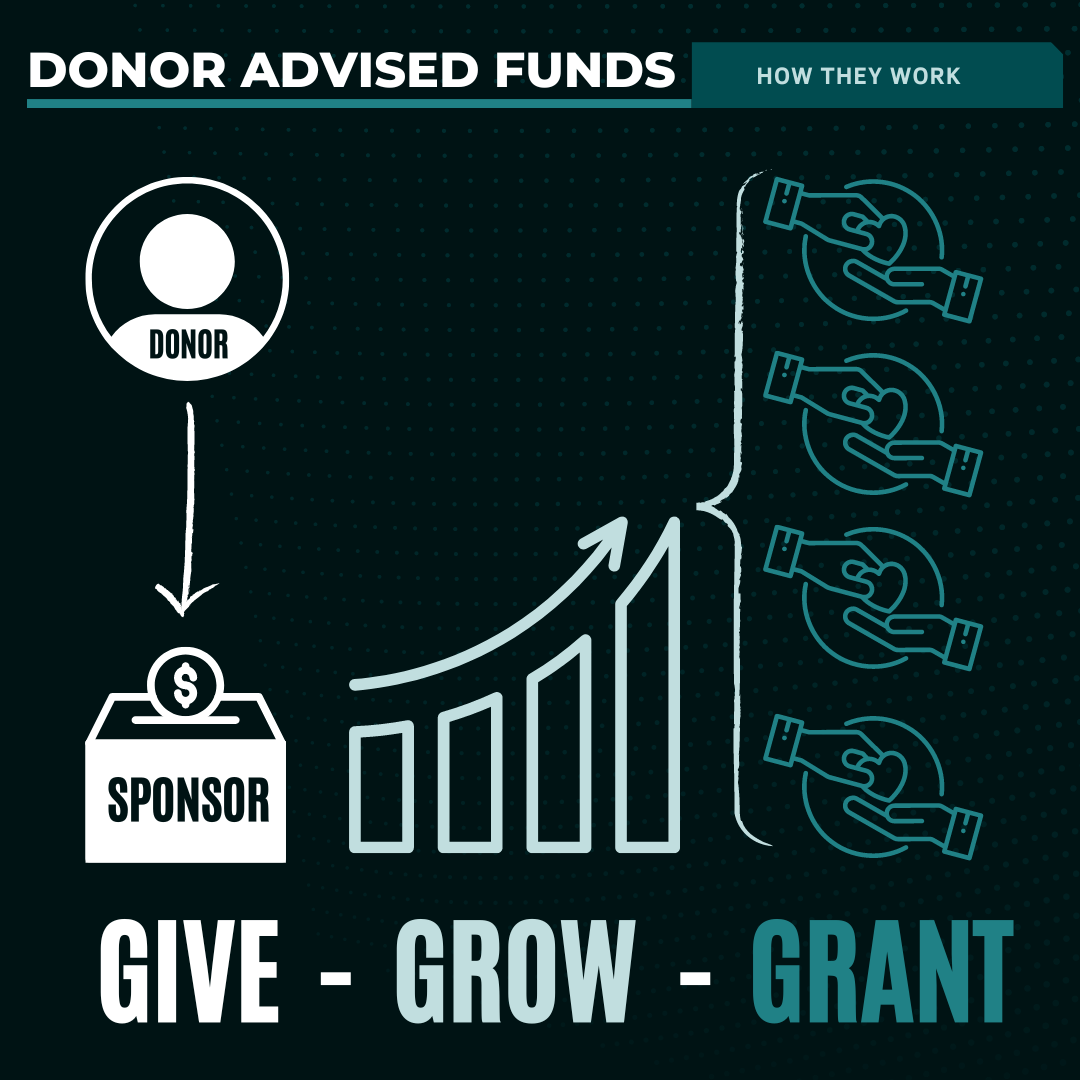The Peculiar Position of Donor Advised Funds
Giving is changing. Institutional philanthropy is at a global all-time high, and the increased reliance on institutional intermediaries like foundations has led to a global expansion of the sector around the world, with over 260,000 foundations existing across 39 countries as of 2018. This is a relatively recent development, as nearly three-quarters of such foundations came into being within the last 25 years.
This rise in institutional philanthropy, often referred to as structured philanthropy, coincides with a reshaping of certain attitudes toward this approach, and questions are arising regarding the strategic efficiencies of such giving vehicles.
With the rise of institutional intermediaries in the philanthropy space, however, it has become harder for younger generations to see direct impact from such giving structures. New generations of donors are just as philanthropic as prior generations, if not more so. Younger donors often derive much of their wealth from tech-related industries, however, and are increasingly prioritizing impact in their giving philosophies.
These donors want better avenues for their giving, with desire to see their money deployed faster and have stronger direct correlation to impact metrics. These avenues are also aligned with many of the technological advances in the field.
The Explosive Rise of the Donor Advised Fund
The importance of technological innovations in philanthropy alongside the rise of new generational participants is not to be understated. It is estimated that, of the 33 billion given away as charitable donations in 2021, roughly three-quarters came from people making their money in tech, with 26 of the 100 richest people in the world making their fortunes in the same space.
With this new class of donors comes new attitudes and approaches. While institutional philanthropy is in a boom-time, foundations have not monopolized such growth. The renewed interest in donor advised funds (DAF) since the pandemic has triggered meteoric growth in the amount of assets stored in DAFs, with recent figures showing over $229 billion stored across 2 million DAF accounts, receiving roughly $86 billion in annual contributions, and granting nearly $52 billion in 2022.
Infographic created by author.
DAFs - a different giving beast
Closely analyzing the giving trends of DAFs versus average total giving we see some significant differences in capital-flows. Most prominently, DAFs invert religious and educational giving trends, giving far more to educational institutions and far less proportionally to religion than seen in aggregate giving.
Proportionally important, DAFs give almost twice as much of all grants to arts and culture nonprofits compared to overall giving. This data demonstrates that DAFs disproportionately give to arts-based fundraising efforts and should not be ignored as potentially fruitful sources of fundraising if doing it right. Understanding the workings, innovations, and potential threats to DAFs and their sponsors becomes paramount for any fundraiser intent to engage or solicit from such sources.
The over-indexing of baby boomers and older generations toward DAF giving are significant looking forward as well: 92% of funds have a succession plan in place, with 30% designating a nonprofit organization as the recipient of their remaining fund balance upon death. This signals a potentially significant transfer of wealth, or at least control such wealth, over time as founding advisors age-out.
It would, therefore, be logical to posit that Gen X, Millennials, and Gen Z will eventually inherit advisor privileges of most of these accounts. This would compound on the amounts already managed by such generations currently, which, given the disproportionate amount of money held in accounts by the older generations, could lead to a potentially rapid shift in the control of wealth already committed to charitable giving - all funds being transferable to any competing sponsor if desired for more robust capabilities, user experience, and consolidation of funds.
Criticisms and Controversy
It is important to note that DAFs have been under immense public scrutiny, with congress currently at work on proposed adjustments in oversight of these specific giving-vehicles. They have often been derided as inefficient in their giving, opaque in their operations, and undemocratic given their appeal to the ultra-rich as storehouses of wealth allowing for immediate charitable tax deductions without any impetus to give once invested. In 2022, 29% of DAF accounts gave out nothing. Many sponsors charge high investment management fees and require minimum account balances, reserving the benefit of these giving vehicles for those with the means to access them.
On top of these critiques, economists like James Andreoni have noted that the industry-standard payout measurement for foundations, adopted by major DAFs in their reporting, tends to grossly overestimate payout rates given the high-revenue nature of DAFs when compared to more traditional foundations (and sometime even results, illogically, in payout rates >100%).
Conclusion - New Disruptors Bucking the Trend?
Given both the benefits and the controversy surrounding DAFs paired with the influx of younger, tech-derived wealth in the philanthropy space, it is important to note how the changes this new generation of philanthropists is making are deliberately informed by such contemporary social critiques. This new generation is not just funneling their money into established sponsors but entirely rewiring the operations of such organizations by founding their own sponsors and introducing new methods of giving in the digital age.
Therein lies a central question: how are new, tech-driven DAF sponsors improving upon the deficiencies of the traditional model, and are they effective at addressing the underlying issues of payout, democratic access, and transparency? While there currently only exist a handful of new tech-driven DAF sponsors and DAF-adjacent companies, they are gaining ground post-pandemic. Their growth has been staggering and shows little sign of slowing down.
These new companies prioritize technology, access, and ease of use. Newer corporate DAF sponsors have been adept at designing their platforms using innovative fintech to address longstanding critiques of DAFs and fundamentally change the way that people give. For a deep dive into how these sponsors redefine how donors engage with DAFs, stay tuned for Part Two coming next week!
-
alphaGrid. “The Rise of Collaborative Giving.” Accessed March 3, 2024. http://www.ft.com/partnercontent/gates-philanthropy-partners/the-rise-of-collaborative-giving.html.
Andreoni, James, and Ray Madoff. “Calculating DAF Payout and What We Learn When We Do It Correctly.” Working Paper. Working Paper Series. National Bureau of Economic Research, October 2020. https://doi.org/10.3386/w27888.
“Charityvest Looks to Socialize DAFs | Wealth Management.” Accessed March 3, 2024. https://www.wealthmanagement.com/technology/charityvest-looks-socialize-dafs.
“Daffy Adds Over $100M in Charitable Contributions in 2023, 425% Growth from 2022 - Year in Review 2023,” January 23, 2024. http://www.daffy.org/resources/year-in-review-2023.
“Donor Advised Funds Are Hot! Key Takeaways from Giving USA’s *NEW* Special Report - BDI.” Accessed March 18, 2024. https://bdiagency.com/donor-advised-funds-are-hot-key-takeaways-from-giving-usas-new-special-report/.
“DonorDrive Announces Support for Donor Advised Fund Payments with Chariot Collaboration | Nasdaq.” Accessed February 18, 2024. https://www.nasdaq.com/press-release/donordrive-announces-support-for-donor-advised-fund-payments-with-chariot.
FORVIS. “Proposed Regulations for Donor Advised Funds.” Accessed February 14, 2024. https://www.forvis.com/forsights/2024/02/proposed-regulations-for-donor-advised-funds.
“Giving USA Limited Data Tableau Visualization | Giving USAGiving USA,” October 6, 2021. https://givingusa.org/giving-usa-limited-data-tableau-visualization/.
“Global Philanthropy Report: Perspectives on the Global Foundation Sector.” Accessed February 18, 2024. https://www.hks.harvard.edu/centers/cpl/publications/global-philanthropy-report-perspectives-global-foundation-sector.
“GoFundMe to Acquire Classy | Business Wire.” Accessed March 30, 2024. https://www.businesswire.com/news/home/20220113005248/en/GoFundMe-to-Acquire-Classy.
Grantmakers in the Arts. “What We’re Watching: Upstart Co-Lab: Inclusive Creative Economy Strategy.” Accessed March 19, 2024. https://www.giarts.org/blog/jaime-sharp/what-were-watching-upstart-co-lab-inclusive-creative-economy-strategy.
“How a Tide of Tech Money Is Transforming Charity.” The Economist, February 11, 2023, NA-NA.
Hoyes, Erin. “The Global Rise of Structured Philanthropy.” NPT UK, September 8, 2018. https://www.nptuk.org/philanthropic-resources/giving-perspectives/the-global-rise-of-structured-philanthropy/.
Marks, Sam, and Guest Contributor |. “The Inside Track: Using Donor-Advised Funds Creatively to Solve Nonprofit Problems.” Inside Philanthropy, October 24, 2023. https://www.insidephilanthropy.com/home/2023/10/24/the-inside-track-using-donor-advised-funds-creatively-to-solve-nonprofit-problems.
Melendez, Steven. “Now You Can Start a Fundraiser for Any Charity of Your Choice in Seconds.” Fast Company, November 3, 2023. https://www.fastcompany.com/90977276/daffy-fundraiser-tool-exclusive.
Mosser, Michelle. “Tapping the Catalytic Capital Potential of Donor Advised Funds.” GreenMoney Journal (blog), September 30, 2022. https://greenmoney.com/tapping-the-catalytic-capital-potential-of-donor-advised-funds/.
“Multi-Donor Funds Emerge as a Creative Architecture for Collaborative, Catalytic Capital - ImpactAlpha.” Accessed February 23, 2024. https://impactalpha.com/multi-donor-funds-creative-architecture-for-collaborative-catalytic-capital/?utm_campaign=The%20Brief&utm_medium=email&_hsmi=295359984&_hsenc=p2ANqtz-8TePCVyiAkkwraRVTVNlwerLezcU2PhU8JtrwCJXk6Jk-yo-41_V1nTqTXhl3kCuBeYaYRktMIdd1LvcAtZCnQCUDFGQ&utm_content=295359984&utm_source=hs_email.
“Next Generation of Generational Giving: Who Gives the Most and Why.” Accessed March 18, 2024. https://www.idonate.com/blog/next-generation-of-generational-giving-who-gives-the-most-and-why.
Pactor, Andrea. “Crowdfunding in the Digital Age.” Lilly Family School of Philanthropy, April 9, 2021. https://blog.philanthropy.iupui.edu/2021/04/09/crowdfunding-in-the-digital-age/.
Upstart Co-Lab. “2022 Impact Report: Investing for an Inclusive Creative Economy.” Accessed March 30, 2024. https://upstartco-lab.org/impact-report/.
Upstart Co-Lab. “Investors.” Accessed March 30, 2024. https://upstartco-lab.org/investors/.
Wyland, Michael. “Donor-Advised Fund Giving Reflects Larger Philanthropy Patterns—Mostly.” Non Profit News | Nonprofit Quarterly, February 28, 2018. https://nonprofitquarterly.org/donor-advised-fund-giving-reflects-overall-us-philanthropy-patterns-mostly/.



